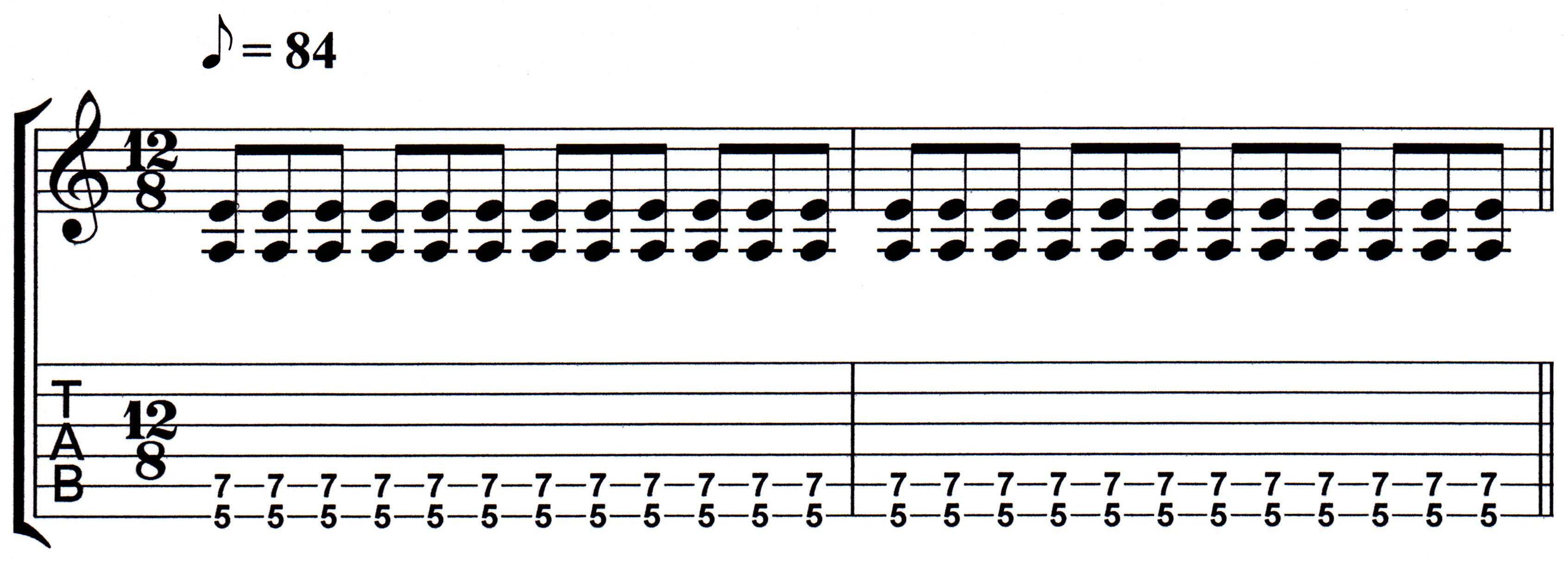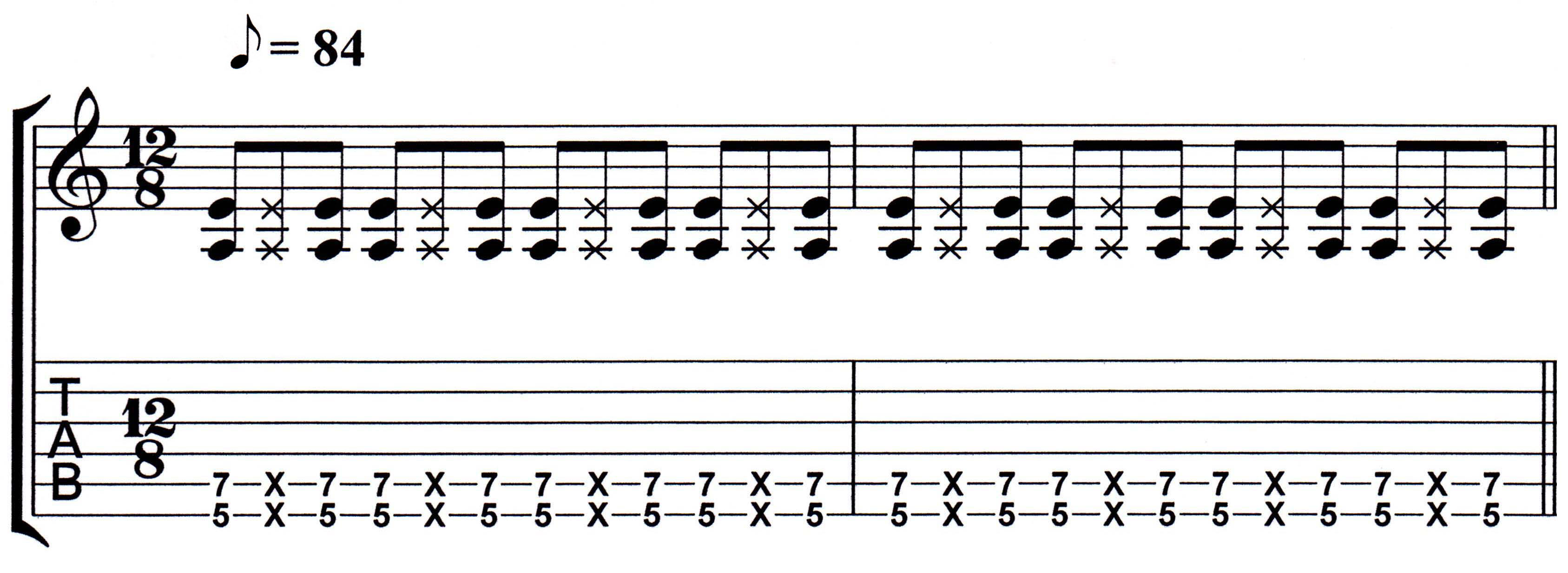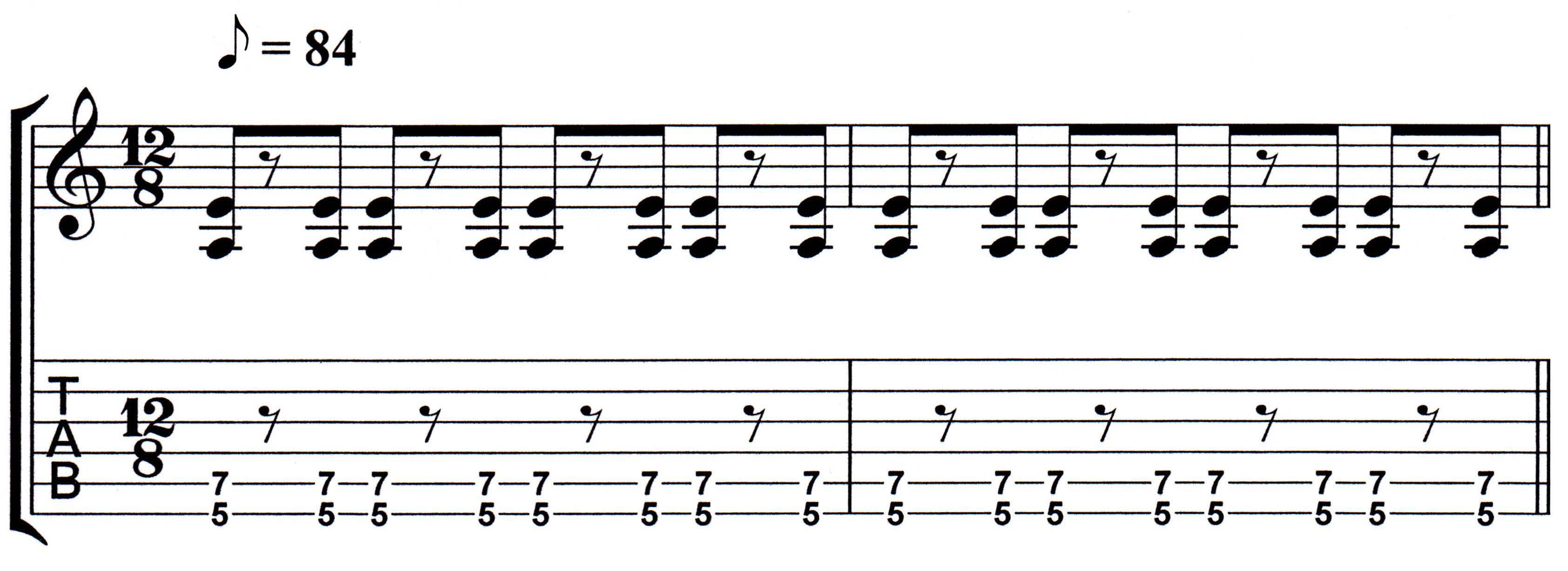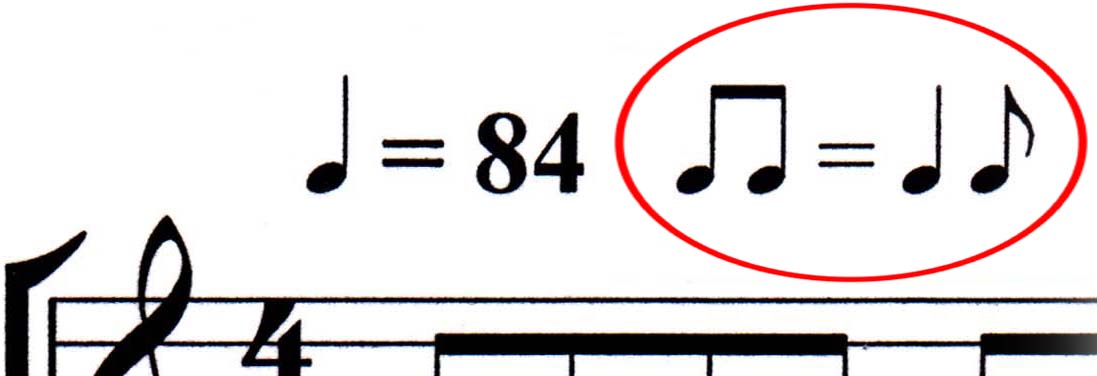
A lot of people really struggle with playing a Shuffle feel. They kinda sorta get it, but it’s a lurching, jerky, inconsistent mess. The main problem is that they don’t actually understand how a Shuffle
is constructed – and so how it is supposed to feel from a playing perspective. They hear it in the recordings of Blues and Rock tunes, but when it comes to playing a proper Shuffle feel, they
are at a loss to understand how to execute this stylistic approach.
So let’s start by breaking it down. To do this, we will be working in a “twelve-eight” time signature. That’s twelve beats to a measure, and the eighth note gets the beat. Play
the following figure using a full Barre position of the A chord at the fifth fret, but only playing the 1 and 5 tones of the chord, with all down strokes. You must use a metronome to learn to do this
correctly. Set it to 84 beats per minute, essentially at a tempo that isn’t too fast for this exercise. You want the *click* to sound on all twelve
beats. It will feel slow, which is exactly what you need. No rush here. Accent the first note of each triplet – that will help give you a sense of the timing.

Got it? Once you can play it smooth and even, you can then proceed forward - but not before. If you want to slightly mute the strings for this part, that's okay, too.
Now, continuing with the twelve-eight time signature, what you will now do is play the first and third note of each triplet, but “rake” the middle note of each
triplet. You do that by relaxing pressure for the second note of each triplet and striking the strings, producing a ‘thrack’ sound (represented by the X in place of an eighth note). Continue with the metronome so you
won’t screw this up. If you have to slow it down to play this correctly, do so. Timing is everything for a proper Shuffle.

Do this correctly and you will begin to hear the shuffle emerge from what you're playing.
Next, you want to now omit that middle rake and play only the first and third notes of each triplet. You need to ‘rest’ on the middle note, which means silence the strings. Just as you raked the middle note
by relaxing pressure, so you again relax pressure, but just don’t rake the strings during that middle ‘rest’. The metronome will click that now silent note off to help keep you centered in your timing.

This is where you begin to honestly embrace the shuffle and truly get the feel right on the money. That's the physical aspect of learning to play a proper shuffle feel.
How do you know when a song should be played with a shuffle feel? Look above the Staff at the beginning of the chart, next to the metronome mark. It’s called a metric modulation (circled
below). You'll see a pair of eighth notes tied together followed by an ‘equals’sign, and then a quarter note and an eighth note. This little graphic tells you to play it with a Shuffle feel, also called
a Swing feel.

It may also simply be written “Med. Swing”, or something to that effect, telling you mid tempo and with a shuffle/swing feel.
Below is a full 12 bar progression employing a typical Blue/Rock shuffle. Notice that it is now written in “4/4” time, and that there are only two eighth notes per beat. This is a shorthand way to convey a shuffle; remember: the metric modulation which tells you to play it as a shuffle.
BUT - you still count it as triplets by counting it out like this:
One an ah; Two an ah; Three an ah; Four an ah
You strum on the beat note (One, Two, Three, Four), and then on the third part of the beat (the “ah” of each beat). Keep the metronome going at 84 bpm, but now call out audibly: One and ah, Two and ah, etc.
to keep the “12” feel present in your thinking. You will eventually be able to simply count a kind of lurching “One & Two & Three & Four &…” once you understand this better.

There are a lot of examples of the Shuffle feel out there. Just listen to "That'll Be The Day" by Buddy Holly, "Pride And Joy" by Stevie Ray Vaughn, "Further On Down The Road" - a classic Blues tune by a whole host of people, and "Albatross" by Fleetwood Mac.
A properly executed up-tempo Shuffle will get people tapping their feet, and in a night club, they'll get out on the dance floor. You just can't sit still when you hear a band rip into a great shuffle riff or popular song that swings like there's no tomorrow.
And remember the lyric to the old song, "It don't mean a thing if it ain't got that Swing!"
You better believe it, brothers and sisters!
Okay, now shut off your computer and go play with some ideas.
See you next time.